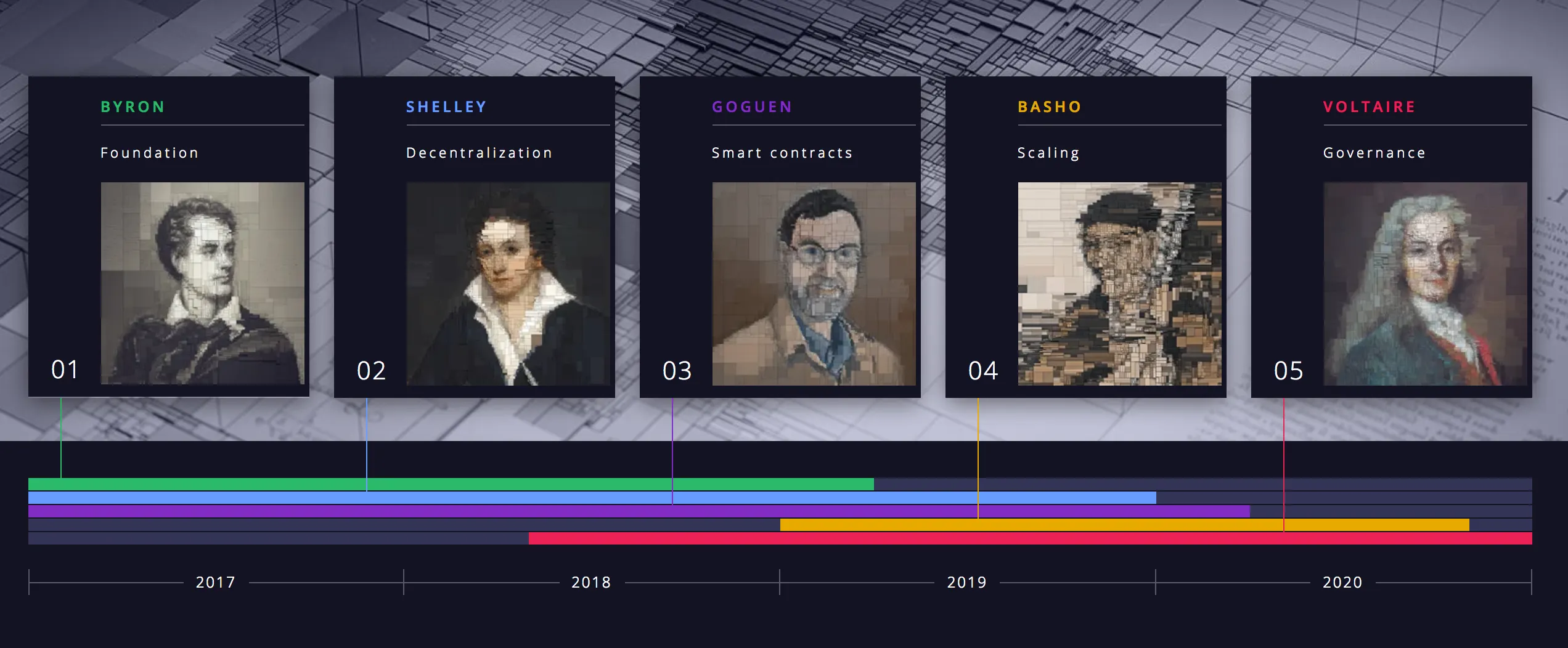Five hundred developers are descending on the University of Wyoming today to get a first taste of working with Plutus—the latest version of the smart contract designed for use on the Cardano blockchain, and launched today.
Cardano and Plutus are developed by blockchain engineering startup IOHK. Its CEO Charles Hoskinson is hoping for a stampede of iteration, innovation and interest, by some of the best minds in the industry. In fact, today’s event is even called the Wyoming Blockchain Stampede.
“We’re showing off the latest and greatest of Plutus and we’re getting ready for launching Goguen,” Hoskinson told Decrypt, referring to the Cardano testnet the IOHK plans to launch later this month.
Cardano’s roadmap (below) is ambitious to say the least. The team have adopted a research-driven approach and are developing a smart contract platform which they claim will have more advanced features than any other protocol in existence.

The blockchain uses a proof-of-stake system, for reduced electricity use and to help improve its scalability.
Hoskinson is a co-founder of Ethereum, and his team are made up of engineers and researchers from some of the world’s finest universities.
But Cardano has been slow to develop, particularly in transitioning to “the Shelley era,” which will bring about proof-of-stake, and eventually mean it’s as decentralized as Bitcoin. The time that the project has taken—four-and-a-half years since its inception—has drawn its fair share of criticism.
Hoskinson defends the project, saying it takes time to build a secure and efficient blockchain that’s destined to be around for 100 years. He says their progress is on track but constrained by development realities, like writing lots of code, and also community participation. “Just because you build the park, doesn’t mean that someone’s going to use the park and go and play in it,” he said.
Plutus is based on a scripting language created for smart contracts by IOHK, to control the flow of money, identity and assets on the blockchain.
Hoskinson said it has been developed with an onus on mathematics and precision. “On average, it has five to 10 times less code than a common programming language like Java,” he said. It allows smart contracts for the Cardano network to be more easily created and, “because you have less code, there’s less to test, and there’s more precision,” he added.
Hoskinson said the aim is to make the blockchain more decentralized before pulling Plutus and smart contracts onto the Cardano system. “But we won’t delay smart contracts for the sake of decentralization,’ he added.
The next big development, he said, is the launch of the next testnet, on September 28, which coincides with celebrations marking the second anniversary of Cardano’s official launch.
And in November or December, with the launch of another key testnet, proof-of-stake will be enabled. People can start to build businesses, which we call stake pools, said Hoskinson, “and once we have enough of those, we can then turn the system over to the community.”
Cardano, he added, “will be significantly more decentralized than any of our competitors.”
A noble claim, but a little longer to wait to see if he can pull it off.





